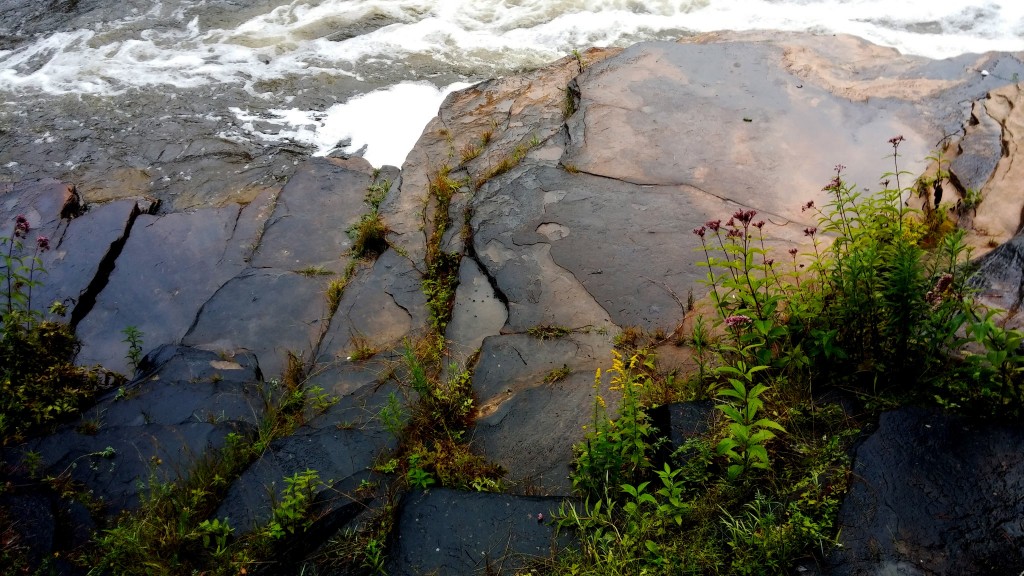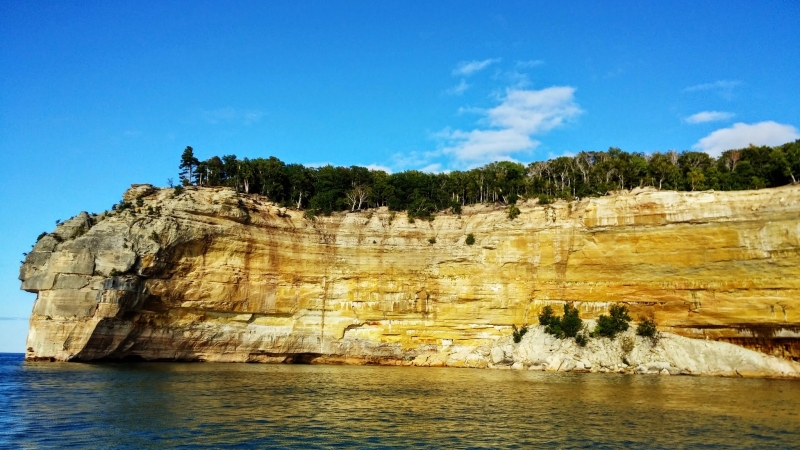A few weeks ago, my husband and I enjoyed a long, restorative weekend in Michigan’s Upper Peninsula, where we camped, hiked, and took in the magnificent sights, including Tahquamenon Falls and the Pictured Rocks National Lakeshore.
The immensity of Lake Superior, the lushness and density of the forests it nourishes, and the humbling scale of the region’s geological formations made it all seem awfully far from our home in Detroit.
But Detroit isn’t really that far from the Pictured Rocks — some 400 miles, give or take. And the connections between the regions run deep. By water, of course, Detroit is linked to the UP by the Great Lakes Waterway, a system of channels and canals connecting Lake Erie to Lake St. Clair, Lake St. Clair to Lake Huron, and Lake Huron all the way up to Lake Superior.
And as Jason explored in his post in July, the distinctive facade of the El Moore (as well as several other notable Detroit buildings) is built out of Lake Superior sandstone — Jacobsville sandstone, to be precise, an ancient (Precambrian) formation that’s found around the Pictured Rocks and Tahquamenon Falls areas. It’s the oldest layer of the Pictured Rocks (and therefore not always visible above the waterline) — so old, in fact, that it pre-dates the fossil record.
As Jason discussed, Jacobsville sandstone, known for its rich, red color, was briefly the rage in construction around the turn of the last century. The sandstone that went into the El Moore was mined somewhere in or around the UP (we’re not sure exactly where), and it traveled down along the Great Lakes Waterway to Detroit, where, in 1898, it ended up in the hands of the workers who built the building we’re in the midst of redeveloping.
Here’s a shot of some exposed Jacobsville sandstone I spotted at Tahquamenon Falls:
It’s amazing, really, to consider that the El Moore is constructed, in part, from this ancient rock, whose age makes the gap between the late nineteenth century and 2014 seem tiny. It’s one notable way that everyone who is, has been, or ever will be involved with the El Moore in Detroit is connected to that great, rich landscape to our north. And it’s a reminder of our deep and abiding connection to the Earth, something that’s easy to forget in the city — and something we’re working to evoke, in small ways, at the new (old) El Moore.




